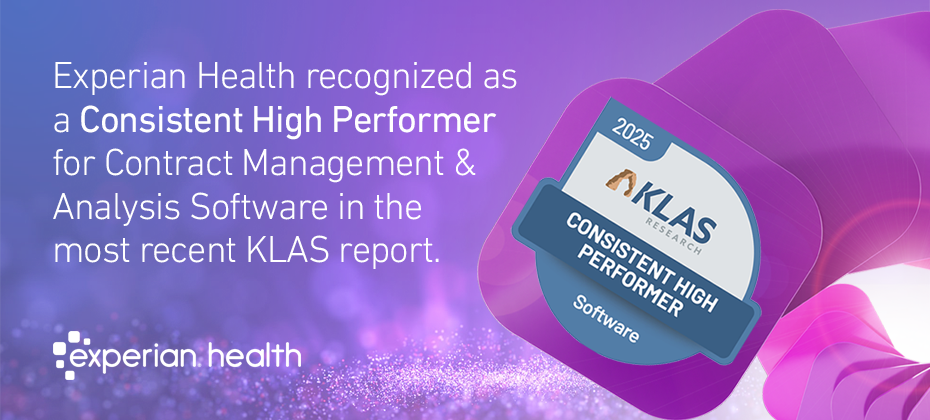
Key takeaways:
- Error-prone manual processes are a top reason for delayed reimbursements.
- Automation across the revenue cycle can help providers see quicker reimbursements.
- Many processes can be automated: patient estimates, eligibility verification checks, collections, claims management, and more.
Prompt reimbursements are crucial for today’s healthcare organizations. Delayed reimbursements can lead to a domino effect that impacts the entire revenue cycle. Provider productivity goes down along with quality of care, patients have poor experiences and the bottom line takes a hit. Reimbursement delays often stem from error-prone, outdated manual processes, overburdened staff and excessive administrative work. However, incorporating revenue cycle management automation can help providers overcome numerous reimbursement challenges and improve processes overall.
With revenue cycle automation, providers can eliminate many persistent pain points in traditional revenue cycle management (RCM). Staff no longer lose time to tedious manual tasks, patients get their queries answered faster, and managers get the meaningful data they need to drive improvements. And the biggest win? It’s easier for providers to get reimbursed for their services, faster and in full.
What is revenue cycle automation and how does it work?
Healthcare revenue cycle management knits together the financial and clinical components of care to ensure providers are properly reimbursed. As staff and patients know all too well, this can be a complex and time-consuming process, involving repetitive tasks and lengthy forms to ensure the right parties get the right information at the right time. This requires data pulled from multiple databases and systems for accurate claims and billing, and is a perfect use case for automation.
In practice, revenue cycle automation involves using technology to complete tasks and processes that may have previously been manually completed. These tasks might include:
- Automatically generating and issuing invoices, bills and financial statements
- Streamlining patient data management and exchanging information quickly and reliably
- Processing digital payments
- Collating and analyzing performance data to draw out valuable insights.
Understanding the challenges in traditional revenue cycle management
When it comes to delayed reimbursements, providers lacking revenue cycle management automation typically face the following challenges:
Inefficiencies in patient access
According to The State of Patient Access 2025, front-end operations are still a source of friction for patients and providers. Four out of the five top patient access challenges reported by providers relate to front-end data collection. Top concerns include insurance searches, reducing errors, and speeding up authorization. Nearly 48% say data collected at registration is “somewhere” or “not” accurate, while 85% report an urgent need for faster, more comprehensive insurance verification.
Rising claim denials due to manual errors
The State of Patient Access also showed that manual, error-prone processes often lead to delays, claim denials and patient frustration. In fact, more than half (56%) of providers say patient information errors are a primary cause of denied claims. When claims are denied, reworks are often time-consuming, costly and place additional burdens on already overworked staff.
Difficulty in managing patient collections
Due to rising costs, confusion over estimates and a lack of patient payment options, providers are often left to deal with unpaid medical bills. According to Experian Health data, 29% of patients say paying for healthcare is getting worse. Affordability is a key factor, but patients are also struggling to understand how much their insurance covers and looking for convenient payment options, like payment plans.
Six ways revenue cycle automation accelerates reimbursements
Revenue cycle improvement through automation can help speed up reimbursements for healthcare providers by:
1. Capturing accurate information quickly during patient access
Gathering patient data manually is time-consuming. Errors in the process can lead to denied claims and roadblocks in patient care. Tools like Experian Health’s Patient Access Curator use artificial intelligence (AI) to streamline patient access and billing, improve data quality and address claim denials from the outset. This solution also ensures that all data is correct on the front end by checking eligibility, coordination of benefits (COB), Medicare Beneficiary Identifier (MBI), demographics and insurance discovery.
2. Simplifying collections and focusing on the right accounts
Healthcare collections are a drag on resources. Automating the repetitive elements in the collections process helps reduce the burden on staff. Collections Optimization Manager leverages automation to analyze patients’ payment histories and other financial information to route their accounts to the right collections pathway. Scoring and segmenting accounts means no time is wasted chasing the wrong accounts. Patients who can pay promptly can do so without unnecessary friction. As a result, providers get paid faster.
3. Reducing manual work and staff burnout
Chronic staffing shortages continue to plague healthcare providers. In Experian Health’s recent staffing survey, 96% of respondents said this affected payer reimbursements and patient collections. While automation cannot replace much-needed expert staff, it can ease pressure on busy teams by relieving them of repetitive tasks, reducing error rates and speeding up workflows.
4. Maintaining regulatory compliance with minimal effort
While regulatory compliance may not directly influence how quickly providers get paid, it does play a crucial role in preventing the delays, denials and financial penalties that impede the overall revenue cycle. Constant changes in regulations and payer reimbursement policies can be difficult to track. Automation helps teams continuously monitor and adapt to these changes for a smoother revenue cycle, often with parallel benefits such as improving the patient experience. One example is Experian Health’s price transparency solutions, which help providers demonstrate compliance with new legislation and provide extra clarity for patients.
5. Improving the end-to-end claims process
Perhaps the most apparent way RCM automation leads to faster reimbursement is in ensuring faster and more accurate claims submissions. Automated claims management solutions, like Experian Health’s award-winning ClaimSource®, reduce the need for error-prone manual processes, while improving accuracy and efficiencies in the claims editing and submission process. Additional claims management tools, like Claim Scrubber, also help providers submit more complete and accurate claims.
Other tools, like Denial Workflow Manager, can be used if claims are denied. With automation and its extensive data analysis capabilities, work lists are generated based on the client’s specifications, like denial category and dollar amount, to identify the root cause of denials and improve upstream processes to prevent them. And as artificial intelligence (AI) gains traction, providers are discovering new ways to use technology to improve claims management. AI Advantage™ uses AI and machine learning to find patterns in payer behavior and identify undocumented rules that could lead to a claim being denied, alerting staff so they can act quickly and avert issues. Then, it uses algorithmic logic to help staff segment and rework denials most efficiently. Providers get paid sooner while minimizing downstream revenue loss.
6. Providing better visibility into improvement opportunities
Finally, automation helps providers analyze and act on revenue cycle data by identifying bottlenecks, trends and improvement opportunities. Automated analyses bring together relevant data from multiple sources in an instant to validate decisions. Machine learning draws on historical information to predict future outcomes, so providers can understand the root cause of delays and take steps to resolve issues.
A healthcare revenue cycle dashboard is not just a presentation tool; it facilitates real-time monitoring of the organization’s financial health, so staff can optimize workflows and speed up reimbursement.
Embracing automation for a more efficient revenue cycle
Like any business, healthcare organizations must maintain a positive cash flow to remain viable and continue serving their communities. Revenue cycle automation strategies can cut through many of the common obstacles that get in the way of financial stability and growth and speed up reimbursements.
Learn more about Experian Health’s revenue cycle management technology and see where automation could have the biggest impact on your organization’s financial health.


